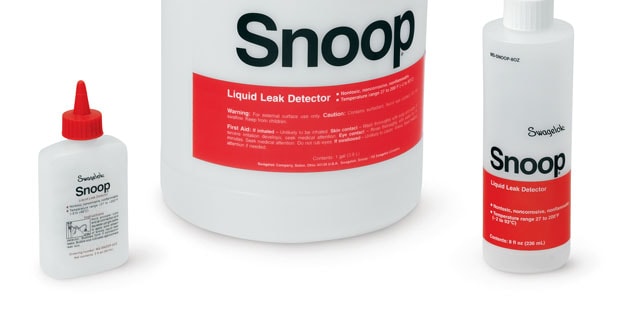Identifying and Prioritizing Leaks for Maximum Safety and Performance

Leaks are a big risk factor in any facility. If you understand the types of leaks that your facility is prone to, you can help your team address those leaks more effectively.
Three Types of Leaks
Swagelok engineers have identified three types of leaks that frequently impact fluid systems:
Real Leak
This leak is from the failure of a pressure barrier to hold or separate a system fluid from its environment. This happens because of gaps between sealing surfaces or cracks in the material.
Virtual Leak
The release of trapped fluid into a fluid system, usually from material outgassing, adsorbed or absorbed fluids, dead legs, or entrapment in narrow openings.
Permeation
Passage of fluids through, in, and out of a pressure barrier that does not have holes large enough to allow more than a minute fraction of molecules to pass through any hole.
Leak Detection Methods
A pressurized system is ideal for most leak testing. Testers can use actual process fluid or a surrogate fluid. Common surrogate fluids include air, water, nitrogen, or helium. For practical purposes, segment test methods for installed equipment from test methods typically performed in a lab or on a benchtop. The methods below are the methods our engineers most commonly use.
Visual Testing
Visual tests are the fundamental leak test for liquid systems. Leaks appear as actual drips or a wet surface below the leaks.
Bubble Testing
This cost-effective test is for gas systems. A simple test, it uses a thin film surfactant (like Snoop) or submerge components in water. This test shows the presence of a leak and it requires observation.
Pressure Change Testing
The pressure change test is for both liquid and gas. During the test we pressurize equipment in isolation at a prescribed pressure and duration. This process creates a gradual measurable pressure drop that shows leakage. Pressure Decay tests are one form of pressure change test. It requires minimal equipment and has the option for automation.
Airborne Ultrasonic Testing
For testing gas systems, this test requires an airborne ultrasonic measurement device located in the presence of a leak. Airborne ultrasonic testing can approximate the rate of leakage in pressurized systems. It can also be used to test non-pressurized systems with an added inboard sound generating device. This test is often used on installed equipment.
Mass Spectrometry Testing
In this test the mass spectrometer detects the presence of trace amounts of leaked gas and measures the amount of leakage. Most tests of this kind use helium as a surrogate, so it is also often called Helium Leak Testing. Outboard testing is for pressurized systems and inboard testing is for vacuum systems to identify small leaks.
Prioritizing Leaks
You can't fix every type of leak in your plant immediately after identification, but you can rank leaks to focus your time and effort effectively.
Dangerous Leaks
Leaks that create safety issues should be at the top of your list. Dangerous leaks include hazardous gases and abrasive chemicals. They also include leaks that can create hazards for slips and falls. Risk managers should identify safety issues first and send your best maintenance technicians to fix them ASAP.
Costly Leaks
All leaks carry some expense, but a handful of leaks can be responsible for a significant amount of that cost. For example, fixing a small leak of a costly gas, like argon may offer more savings than the stoppage of a large leak of compressed air.
Nuisance Leaks
Once you have addressed your most expensive leaks, you can begin to address other leaks that are less critical. Make sure your maintenance team has a list of locations to address these less critical leaks when time allows.
Swagelok Northwest (US) consistently updates the training for our engineers in a variety of topics. This improves their ability to identify and address different types of leaks. We also offer hands-on training for our customers and give you the latest information on proper material selection and hands-on skills like tube bending and tube fitting installation.
We want your plant to be safe and efficient. A focus on identifying and stopping leaks, will make your facility safer and more productive. Contact us today to get started.
